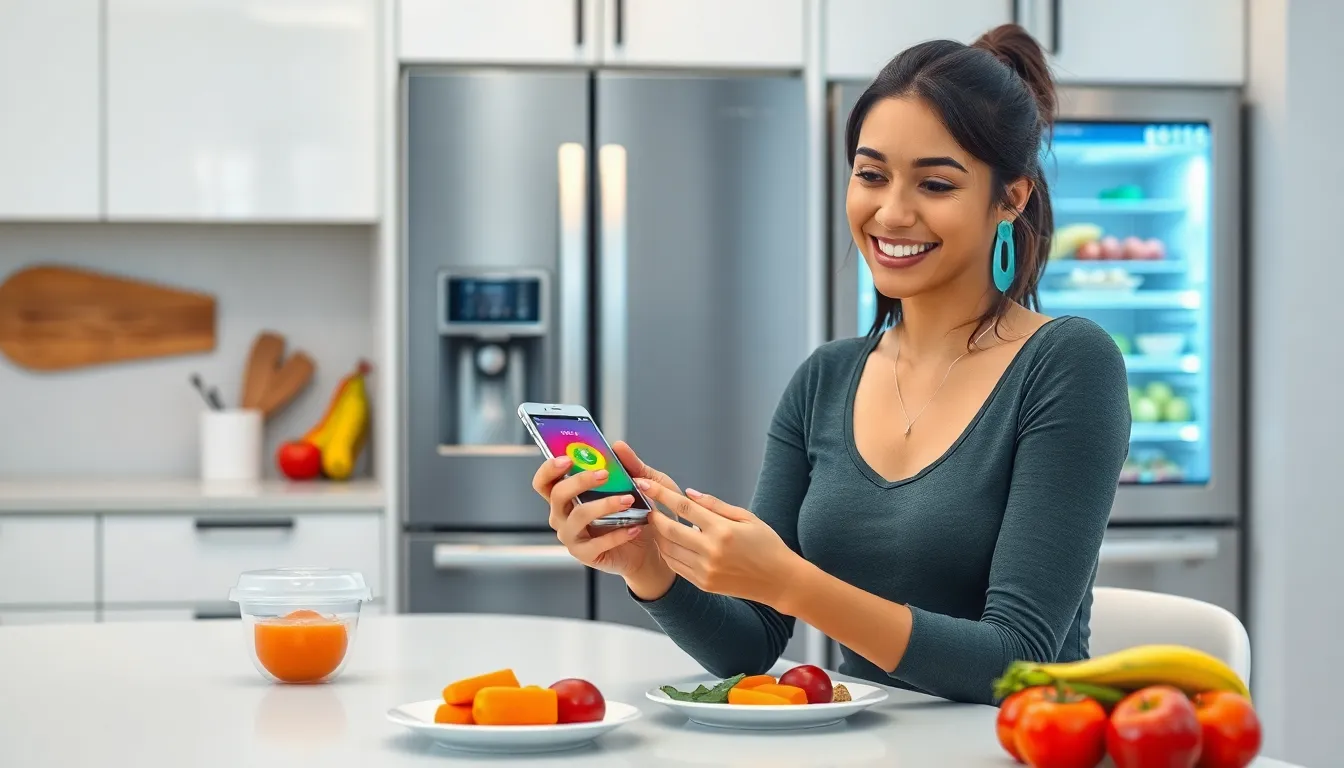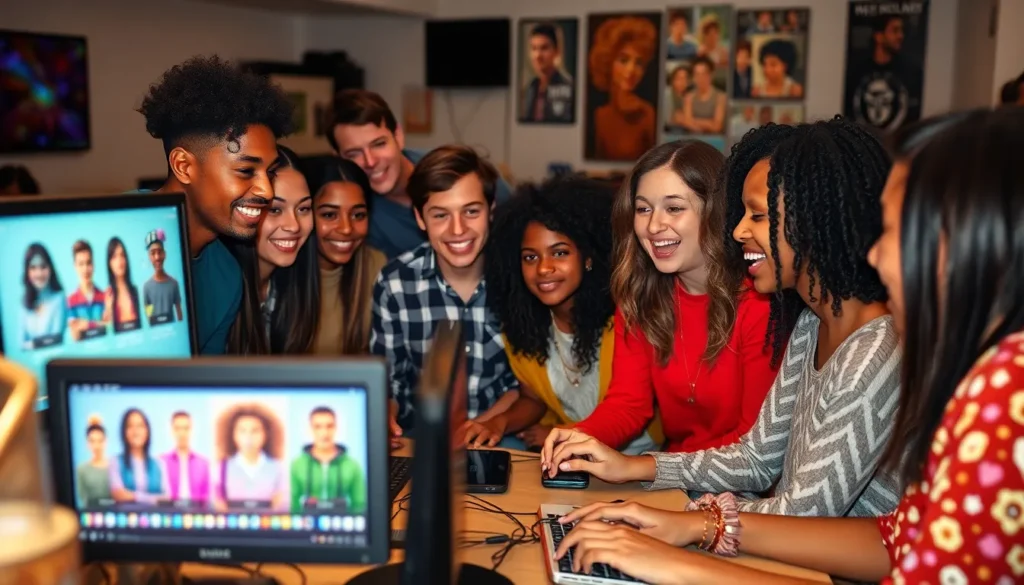Table of Contents
ToggleIn today’s fast-paced world, technology isn’t just a tool; it’s practically a member of the family. From smartphones that double as personal assistants to smart fridges that remind you to buy milk, it’s hard to imagine life without these digital companions. They’re like that friend who always knows what you need—sometimes even before you do!
Overview of Technology in Daily Life
Technology plays a crucial role in everyday activities. Smartphones function as personal assistants by managing schedules and providing instant access to information. Smart home devices enhance convenience, allowing users to control lighting and temperature remotely. Wearable technology tracks fitness levels and health metrics, promoting active lifestyles.
Daily interactions with technology shape communication. Messaging apps and video calls foster connections, bridging distances among family and friends. Online platforms facilitate remote work, transforming traditional office environments into flexible setups.
Digital payments simplify financial transactions. Credit cards, mobile wallets, and apps enable secure and efficient purchases. Smart fridges monitor food inventory and expiration dates, reducing waste and aiding meal planning.
Educational technology enriches learning experiences. Online courses and e-books provide access to vast knowledge resources. Interactive tools engage students, catering to different learning styles.
Social media platforms create communities centered around shared interests. They serve as spaces for discussion, creativity, and collaboration. Artificial intelligence enhances experiences by personalizing content and recommendations based on user preferences.
Understanding the impact of technology reveals its significance. It transforms daily routines, enhances productivity, and connects individuals. Everyday life continuously evolves with advancements in technology, shaping current and future generations.
Impact of Technology on Communication

Technology has dramatically transformed communication, making it faster and more accessible. This shift influences social interactions and workflows in profound ways.
Social Media Platforms
Social media platforms facilitate real-time communication among users. They connect individuals across the globe, allowing for the sharing of thoughts, experiences, and news. Features like live streaming events foster engagement, enabling users to participate from different locations. Communities form around shared interests, creating spaces for discussion and collaboration. These platforms also serve businesses, enabling targeted marketing and customer engagement. Statistics show that 4.9 billion people worldwide use social media, showcasing its significance in daily communication.
Messaging Applications
Messaging applications streamline communication by providing instant messaging services. They allow users to send text, voice messages, and multimedia files quickly. Emojis and stickers enhance expression, making conversations more engaging. Many messaging apps also feature group chats, enabling collaborative discussions and team coordination. Security features, like end-to-end encryption, protect user privacy, fostering trust in digital communication. With over 2.5 billion users of messaging apps worldwide, their impact on personal and professional interactions continues to grow.
Technology in Education
Technology significantly enhances education by providing diverse learning experiences. Online platforms support both students and teachers, offering a flexible environment conducive to learning.
Online Learning Tools
Online learning tools have revolutionized traditional education. Platforms like Zoom and Google Classroom enable real-time interaction between educators and students. These tools offer features such as screen sharing, video conferencing, and collaborative workspaces, promoting engagement. According to recent data, 74% of educators believe that technology improves learning outcomes. Students access numerous resources through learning management systems, including videos, quizzes, and interactive modules. Real-time feedback helps identify areas for improvement, fostering a personalized approach to education. In summary, online learning tools create a dynamic and inclusive educational landscape.
Educational Apps
Educational apps serve as powerful resources for learners of all ages. Applications like Khan Academy and Duolingo provide users with tailored learning experiences across various subjects. Gamification elements, such as rewards and challenges, encourage active participation. With over 2 billion downloads in the education category, these apps maintain broad appeal. Metrics indicate that users show increased retention and understanding of material when using apps. Many educational apps also offer progress tracking features, allowing users to set goals and monitor advancements. By enhancing accessibility and engagement, educational apps play a crucial role in modern learning environments.
Smart Home Innovations
Smart home innovations transform everyday living by integrating technology into households. These advancements enhance security, convenience, and efficiency, making life more manageable.
Home Automation
Home automation systems allow users to control appliances and devices remotely. Smart lighting adjusts brightness based on the time of day, while smart thermostats adapt to user preferences, optimizing comfort. Voice-activated assistants streamline tasks, enabling users to set reminders or control music hands-free. With the rise of interconnected devices, homeowners benefit from seamless integration, creating a cohesive smart environment. Companies like Google and Amazon lead the way, providing comprehensive smart home ecosystems. These solutions create a more convenient lifestyle while increasing overall satisfaction.
Energy Efficiency
Energy-efficient appliances play a crucial role in sustainable living. Smart thermostats, for instance, optimize heating and cooling based on occupancy, reducing unnecessary energy consumption. Advanced technologies in smart lighting create more options, allowing users to schedule on-off times for added efficiency. Smart plugs monitor energy usage, helping users identify and reduce waste. In fact, households using smart devices report energy savings of up to 30%. These efficiencies not only lower bills but also contribute to environmental sustainability, promoting a greener future.
Health and Fitness Technology
Health and fitness technology plays a crucial role in promoting wellness and encouraging active lifestyles. With advancements in this field, individuals can track their health metrics and monitor their fitness progress more effectively.
Wearable Devices
Wearable devices contribute significantly to fitness monitoring. Smartwatches and fitness trackers provide real-time data, logging steps, heart rates, and calories burned. Users find motivation through these metrics, enabling them to set specific fitness goals. Features like sleep tracking enhance overall health insights. Some wearables sync with smartphones, allowing users to access detailed analytics effortlessly. The global wearable market reached $81.5 billion in 2022, indicating strong consumer interest.
Fitness Apps
Fitness apps enhance workout experiences by offering personalized routines and tracking progress. Many apps feature instructional videos, making exercises accessible to users of all fitness levels. Integration with social media encourages community support, helping users stay motivated. Apps like MyFitnessPal and Strava help maintain accountability through goal-setting and statistics. As of 2023, over 250 million fitness apps are available, demonstrating their popularity in promoting healthier lifestyles.
Technology has seamlessly woven itself into the fabric of daily life. Its presence enhances convenience and fosters connections among individuals. From smart devices that simplify household tasks to educational tools that enrich learning experiences, technology continues to shape how people interact and engage with the world around them.
As advancements unfold, the potential for innovation remains vast. Embracing these changes can lead to improved productivity and a more connected lifestyle. With technology evolving rapidly, staying informed and adaptable will ensure that individuals can harness its benefits for a brighter future.




